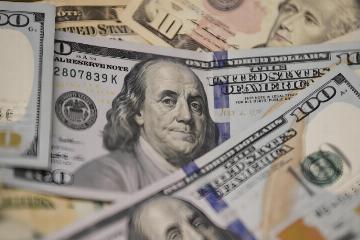Wall Street Bets on a Stronger Dollar Next Year
Advertisements
In recent times, Wall Street has shown a clear belief in the strength of the U.S. dollar, anticipating that after already rising dramatically, it could potentially reach parity with the euro, which implies an exchange rate of one-to-oneThis stance reflects an overarching sentiment among investors that a depreciation of the dollar seems increasingly unlikelySuch an outlook suggests a more complex interplay of economic forces at work, particularly as the dollar has demonstrated robust growth on the international stage, marking a cumulative increase of approximately 6.2% since the beginning of OctoberIf this trajectory continues, the current quarter is poised to be one of the most substantial periods for the dollar since the Federal Reserve embarked on its rate hiking journey in 2022.
Analysts emphasize that, unlike traditional tightening monetary policies, the forthcoming tax cuts and tariff plans may have a unique and profound influence on the economy's structure and trade dynamics, leading to a more direct and significant uplift in the dollar's value
Major financial institutions, including Goldman Sachs, Morgan Stanley, and UBS, are predicting further increases in the dollar's strength next year, with Deutsche Bank even projecting that the dollar might reach parity with the euro by 2025. As of now, the euro is trading at about 1.0500 against the dollar, a significant shift from the 1.11 mark seen earlier in October.
Sonal Desai, the Chief Investment Officer of Franklin Templeton’s fixed income division, has remarked that the notion of a depreciating currency is "somewhat unrealistic," pointing to a plethora of conflicting factors influencing the economic climateDesai elaborates that many of the policies under discussion are likely to favor the dollar rather than work against it, reinforcing the belief that the dollar's ascent could continue.
The current economic landscape is not without its critiquesDuring his first term, President Biden expressed concerns over the adverse effects of a strong dollar on domestic industries and exports, indirectly urging other economies to allow their currencies to appreciate against the dollar
- Common Psychological Pitfalls for Investors.
- The Dilemma of Automotive LiDAR
- Bitcoin in 2024: Global Regulation Takes Shape
- Tongcheng Targets International Expansion After $8B Valuation
- Who Will Power the AI Boom?
In an exclusive interview held in July, he articulated, "We are facing serious currency issues," underlining the tension embedded within the currency dynamics.
The strength of the dollar relative to various currencies presents a challenge, especially for U.S. companies trying to sell products abroad, such as tractorsThe higher value of the dollar makes U.S. goods more expensive on foreign markets, potentially hampering salesFurthermore, the taxation and tariff policies proposed by the administration are perceived to likely spur domestic inflation, which could have various ramifications for both consumers and businesses.
In this complex economic environment, the Federal Reserve may need to maintain elevated interest rates for an extended period, reinforcing the dollar's strengthAjay Rajadhyaksha, Chairman of Global Research at Barclays, expressed that recent monetary policies are decidedly favorable for the dollar, with projections indicating that by the end of 2025, the exchange rate could strengthen to 1 euro valued at 1.04 dollars.
This prevailing set of circumstances poses a daunting challenge for the incoming administration
Balancing the government budget deficit while applying pressure on trade partners and effectively managing dollar valuation is fraught with difficulty, and missteps could lead to detrimental outcomes for the dollar's status as the world's reserve currency.
Eric Winograd, Chief Economist at AllianceBernstein, highlighted the importance of maintaining the dollar’s preeminenceWinograd noted that discussions in other countries about trading in currencies other than the dollar evoke a sense of unease, reflecting concerns about the potential erosion of dollar dominance in global trade.
Previous discussions surrounding tariffs on countries forming alternative currencies to the dollar have amplified these sentiments, with threats of imposing extensive tariffs—up to 100% on goods—looming over BRICS nations unless they abandon their plans for creating alternative currencies
Winograd asserts, "The new government’s most explicit message will be to support the dollar and prepare for its appreciation."
Quantitative strategies and frameworks reminiscent of the historic Plaza Accord are met with skepticism among investors and strategistsBéson, a candidate for the Treasury position, had previously floated the idea of establishing frameworks similar to the “Mar-a-Lago Accord,” which would segment the global economy into three groups based on how willing countries are to cooperate toward U.S. goals.
In explaining his vision for this segmentation, Béson said, “We should clearly indicate that there will be three buckets: green, yellow, and redEach country must ascertain which bucket they belong inThese are our demands, and you can choose which bucket you want to be placed in, thereby receiving corresponding treatment.”
However, former Treasury officials like Mark Sobel cautioned against overestimating America’s influence over other nations, suggesting that the advocates of the “Mar-a-Lago Accord” might significantly overstate the sway the U.S. holds.
Despite the numerous dynamics at play, analysts concur that the predominance of the dollar's influence on financial markets has largely been factored in, yet few anticipate that this spells the end of the dollar's upward trajectory

Leave a Reply